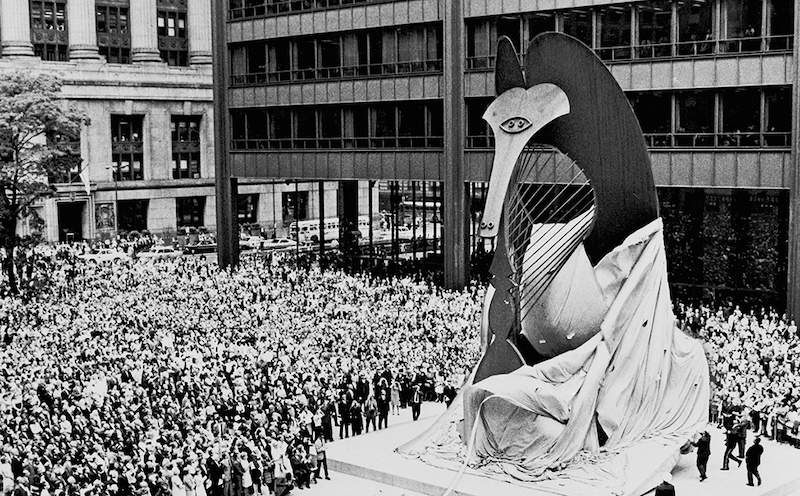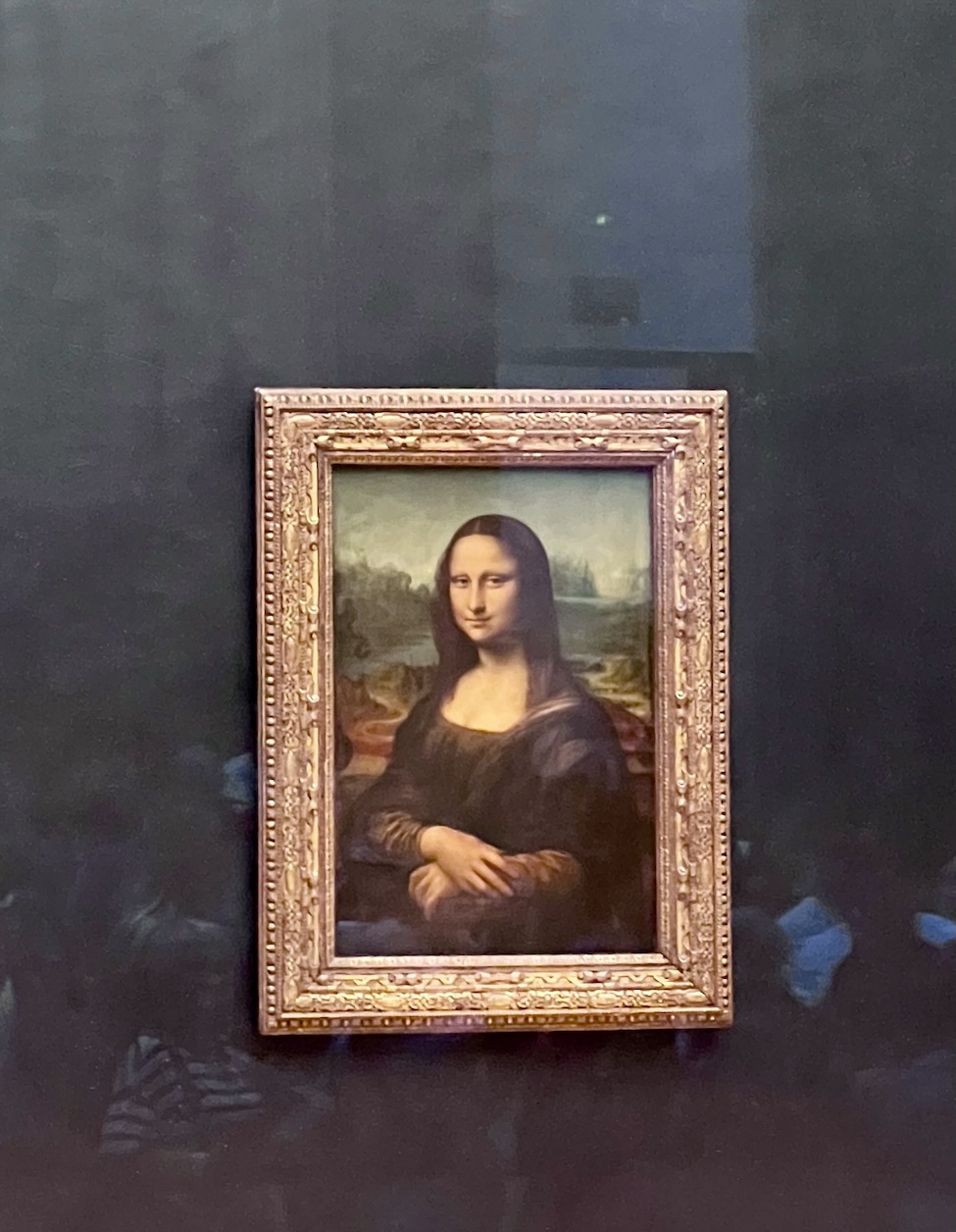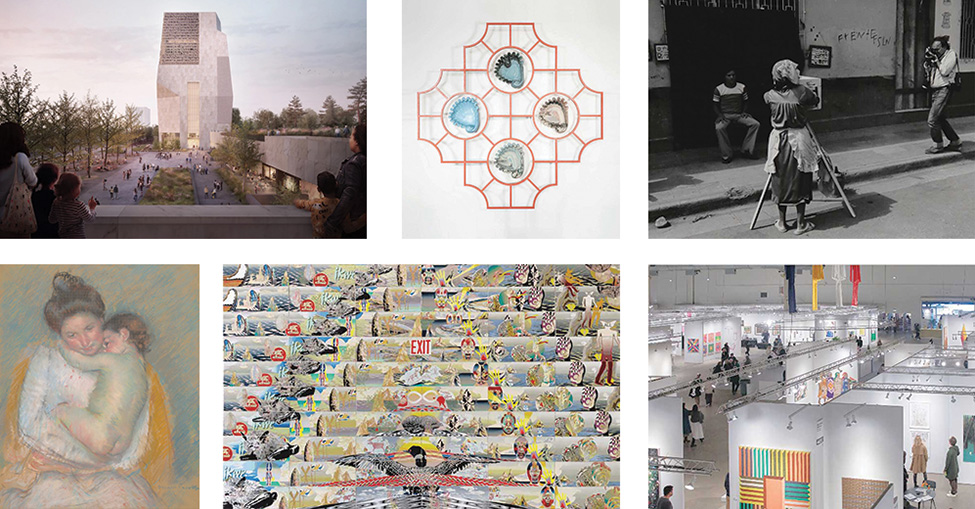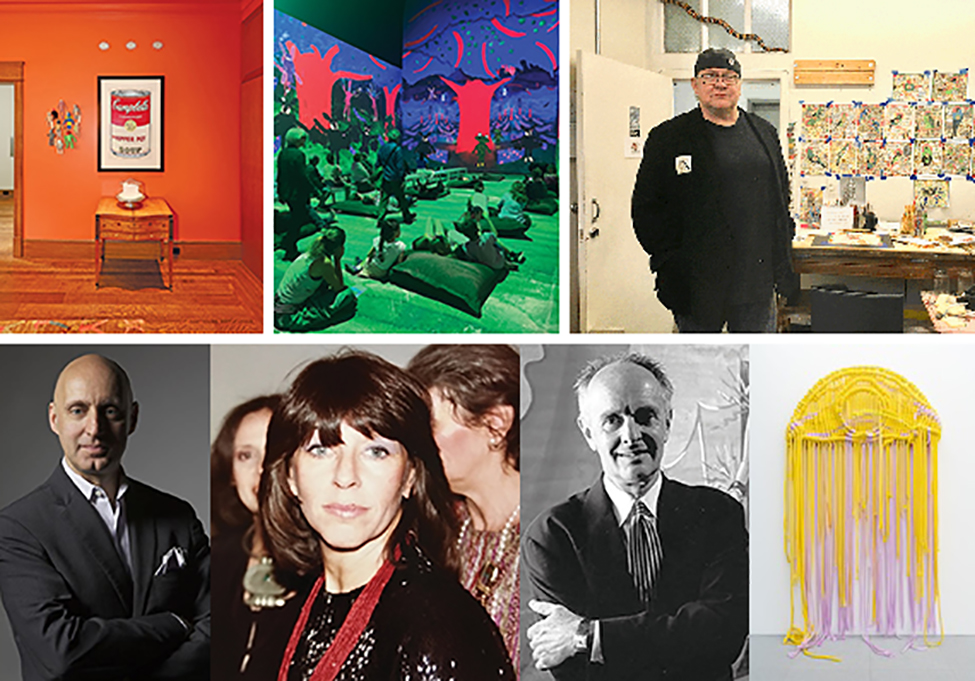Picasso and Chicago opens at the Art Institute: Our City's Ties to the Artist


By GINNY VAN ALYEA
For most Chicagoans, Picasso first "arrived" in Chicago in 1967 in a major, public way that still resonates with our city's citizens today. Now 46 years later, his influence may be seen as the beginning of this city's modern artistic identity.
Picasso of course never actually set foot in Chicago, or in this country for that matter. He was very, very close - it is rumored that a plane ticket to Chicago for the sculpture's unveling had been purchased by Skidmore, Owings & Merrill, the firm that commissioned the sculpture that today is the star of Daley Plaza downtown. While Picasso is undoubtedly one of the most celebrated, admired and prolific artists in the history of art, Chicago has a few of its own personal ties to the artist and his work. The new exhibition at the Art Institute of Chicago, the first major Picasso exhibition organized by the museum in nearly three decades, makes the case that long before his famous sculpture mystified and delighted Chicagoans in 1967, Picasso's artistic style and influence was key to launching local enthusiasm for embracing modern art.
A lot of Chicago/Picasso 'firsts' are covered in the show: in 1913 the Art Institute of Chicago became the first American museum to show Picasso's work, after being a part of the innaugural Armory Show in New York that same year. Inspired by the Armory Show, the Arts Club was founded in 1916. In 1923 it presented Picasso's first US solo showing outside of a commercial gallery. One of AIC's most well-known collection anchors is the Old Guitarist, which was purchased by Frederic Clay Bartlett in memory of his wife Helen Birch Bartlett and given to AIC in 1926. It was the first painting by Picasso acquired by a US museum.
The exhibition is vast, including 250 works done in a range of mediums and time periods. The works come primarily from AIC's own collection, and mostly they are not blockbusters (3 major paintings on loan from other museums are separated from the main exhibition and are hanging in the Modern Wing - something I found logistically awkward) but the many pieces in the show add up to an illuminating picture of how Chicago came to see itself in an artistic light as well as be known in the world as a progressive city committed to the arts. It is worth spending time with as many of the pieces as possible, while also seeking out new favorites.
A highlight is the opening of the show, where a recording of Studs Terkel interiewing Chicagoans in the Federal plaza (now Daley Plaza) on the day the Picasso Woman was unveiled. It's delightful to hear the candid respones. One spectator was there for a baton contest. Someone else thought a statue in honor of someone who'd 'done something for humanity' would have been more fitting. One gentleman thought it resembled the 'pelvic structure of a prehistoric monster.' Others were worried it would rust and hoped it 'worked out.' Most seemed to gaze in awe that their city had put this project together and made such a show of being progressive. After I saw the exhibition, I learned another secret from SAIC's former president, Tony Jones. He recalled recently leading Paloma Picasso on a tour of the show before it opened. While they were examining the Picasso Woman macquette, she leaned her head into the sculpture and pointed out that her father wrote inside many pieces. For the Woman he had apparently been concerned that the piece would hold up because of the weight of the steel and the strong welding that would be required. Just to make sure the piece would stand the test of time and that the heavy head would not tumble down on visitors, he wrote some simple instructions for the welders in Gary, IN - basically, he said, make sure it's on there tight!
Picasso never accepted payment for the commission, instead giving it to the city as a gift. That generous spirit is certainly still present here today.






